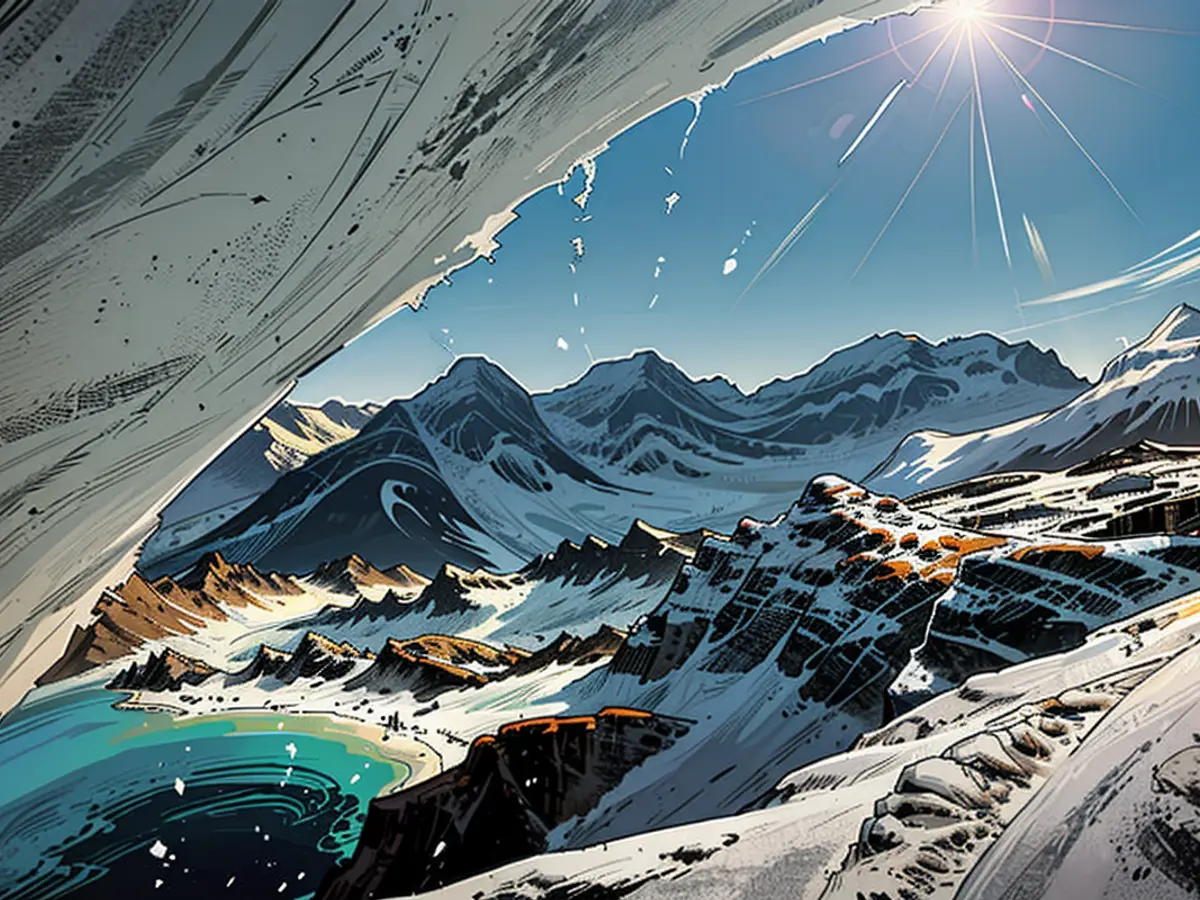The diminution of Swiss glacier volumes persists in this current year.
Despite the substantial snowfall during the 2023/24 winter, Switzerland's glaciers weren't significantly improved: The Swiss Academy of Sciences' Cryospheric Monitoring Commission revealed that the uncharacteristically hot weather in July and August, along with Saharan dirt settling on the mountains, resulted in a 2.5% decrease in glacier volume this year.
In the initial analysis, the situation seemed favorable, with the Academy mentioning that the heavy snowfall from the 2023/24 winter season, as indicated by Glamos' Swiss Glacier Monitoring Network, showed a 30% increase in snowfall above 2,200 meters compared to traditional averages. The Academy further stated that the average snow depths between November and May reached record-breaking levels during this period, going as far back as 90 years.
Despite the promising signs from the initial snowfall analysis, the final glacier volume measurement revealed a contrasting outcome. The 30% increase in snowfall above 2,200 meters and the record-breaking snow depths over the winter months couldn't compensate for the negative effects of the July and August heatwave and Saharan dirt, resulting in a minor decrease in glacier volume of 2.5%.








